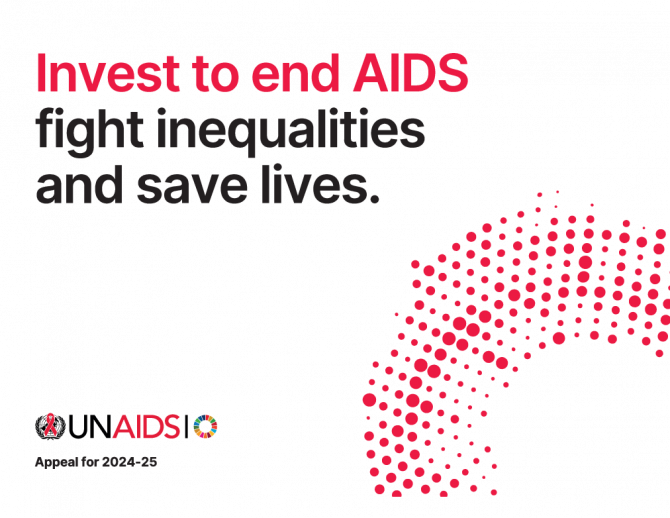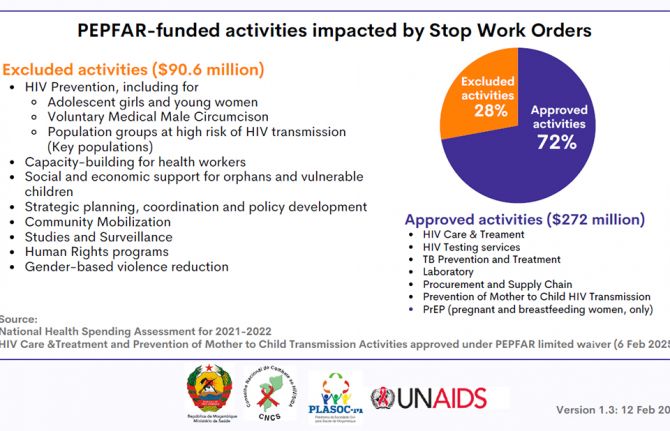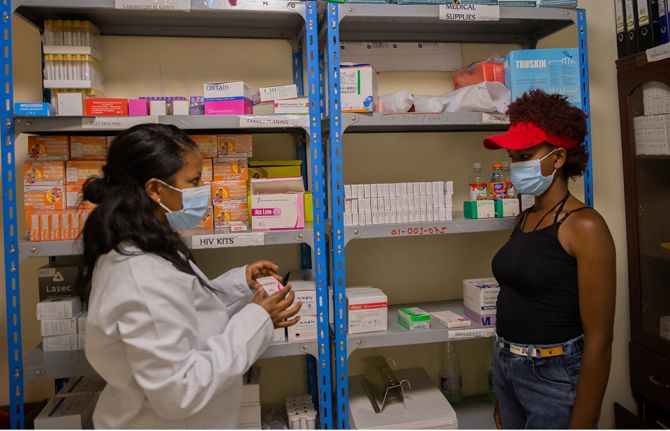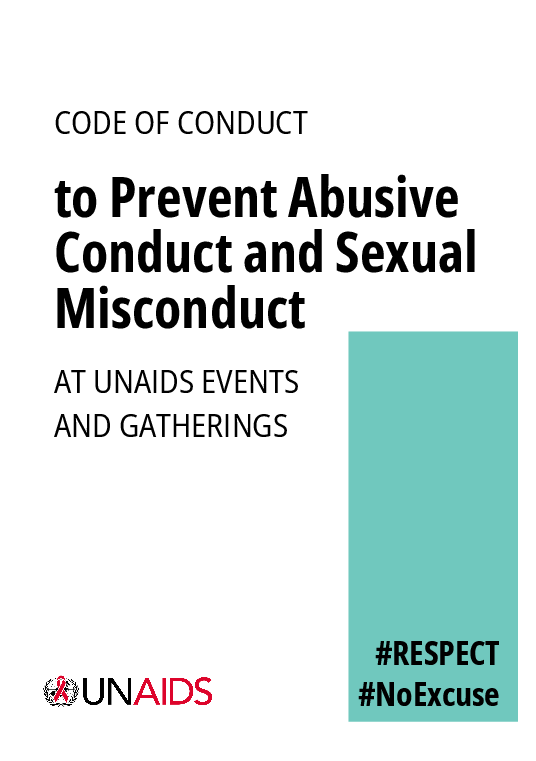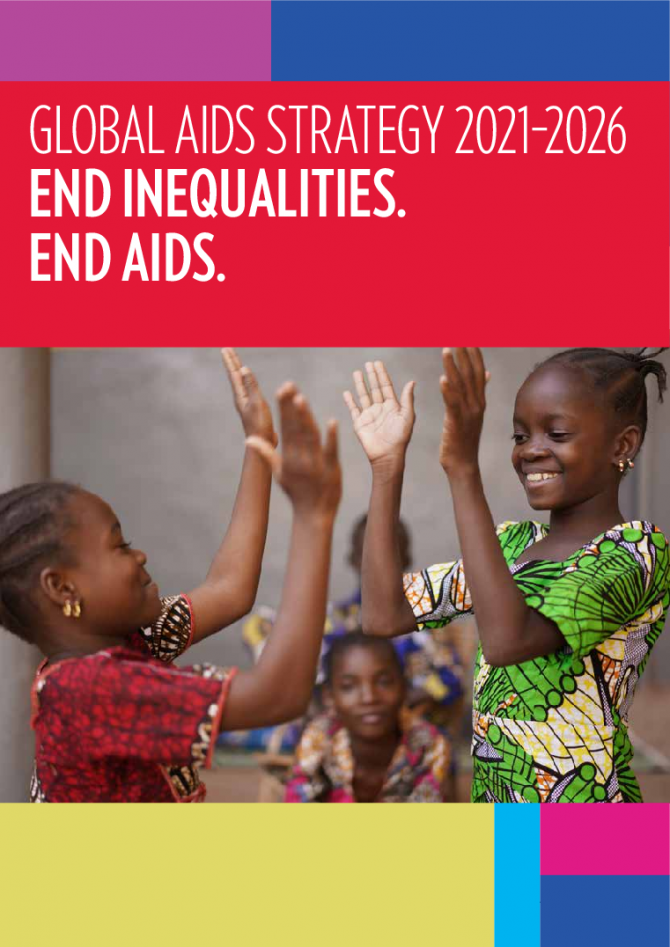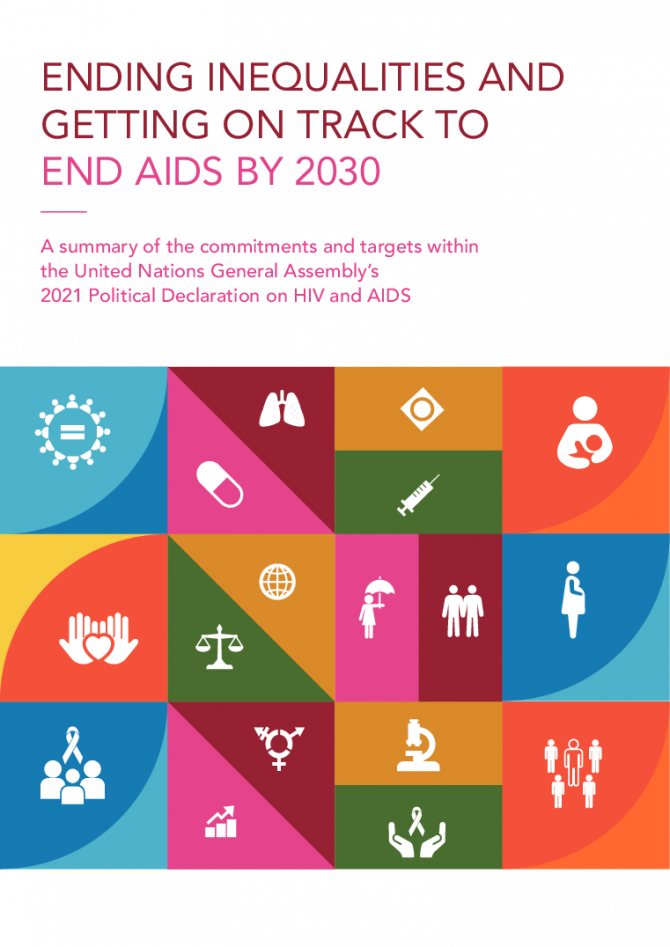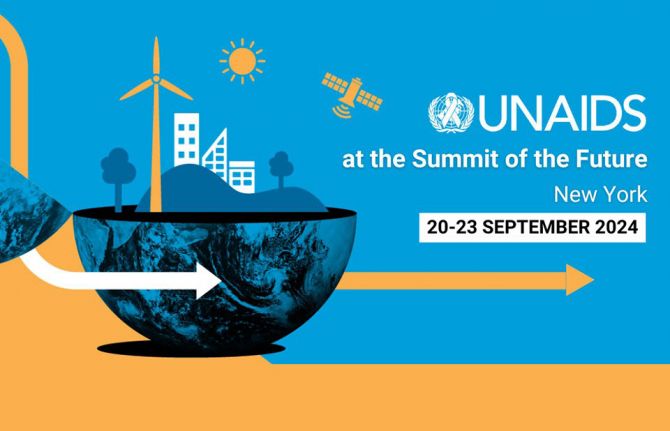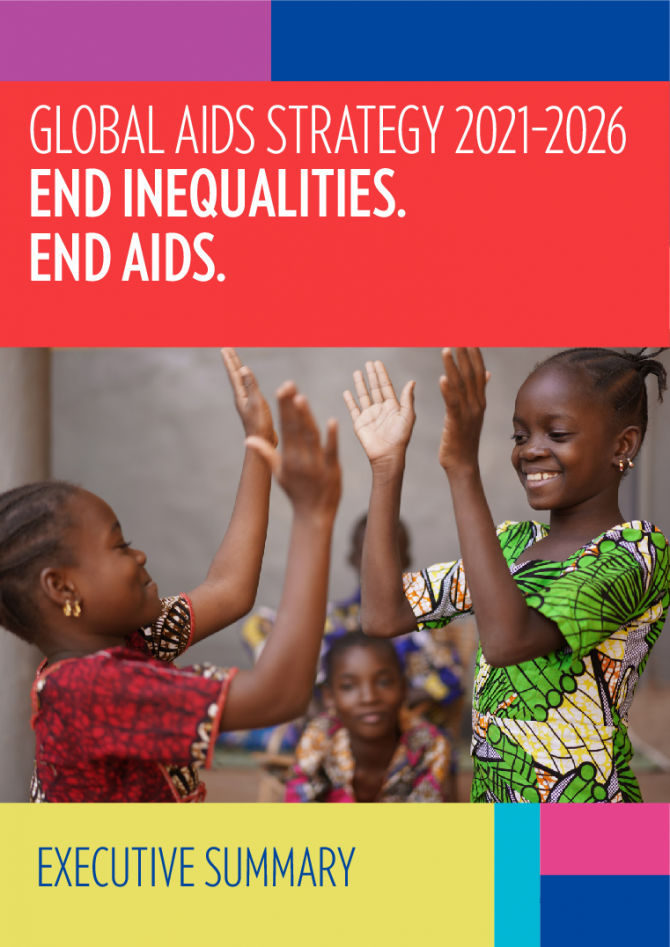UNAIDS Strategy

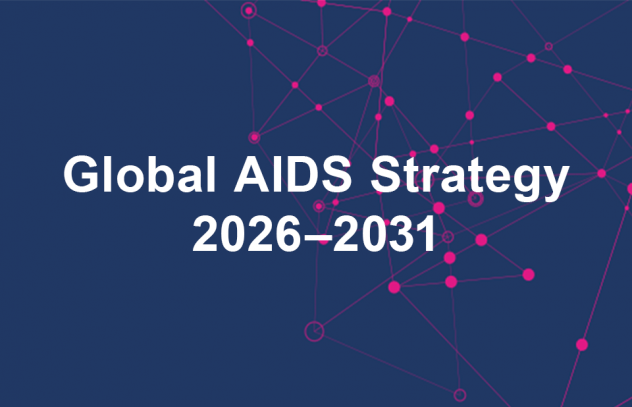
Feature Story
UNAIDS launches the development of the new Global AIDS Strategy 2026-2031
20 February 2025
20 February 2025 20 February 2025In the past two decades, HIV-related deaths have been reduced by more than half, and millions of people have gained access to life-saving treatment. Scientific breakthroughs, strong political commitment, and community leadership have transformed the HIV response. Yet, despite these remarkable achievements, the path to ending AIDS is still full of challenges.
Today, the HIV response is at a crossroads. Persistent inequalities, financial constraints, and emerging health threats risk derailing progress. The hard-won gains of recent decades must not only be safeguarded but accelerated. This is why UNAIDS is launching the development of the new Global AIDS Strategy 2026-2031, an ambitious, inclusive, and action-driven plan that will guide the global HIV response for the next five years and help end AIDS as a public health threat.
"To end AIDS as a public health threat by 2030, we must act with urgency, ambition, and innovation," said Winnie Byanyima, Executive Director of UNAIDS. "This strategy is an opportunity to rethink and strengthen the HIV response by listening to communities, addressing inequalities, applying the science, ensuring equal access to new innovations and leaving no one behind."
UNAIDS has dedicated 2024 to laying the foundation for this new strategy. A mid-term review of the current Global AIDS Strategy has highlighted the urgent need to accelerate HIV prevention, address societal barriers, and sustain progress in treatment. UNAIDS convened a Global Task Team, composed of experts from governments, civil society, multilateral organizations, and public health, to recommend bold, measurable, and evidence-informed targets for 2030.
The new strategy will be developed through an open and participatory process that brings together all HIV actors, including governments, civil society, people living with and affected by HIV, donors, UNAIDS co-sponsors, and the private sector. It will build on past successes while tackling the biggest challenges ahead.
UNAIDS estimates that by 2050, between 29 and 46 million people will still be living with HIV, all of whom will need access to treatment and support to live healthy lives and prevent onward transmission. Closing gaps in treatment, overcoming complacency, and removing structural and societal barriers that prevent people from accessing services will be essential. Countries must have strong and sustainable systems in place to provide adequate care.
This effort requires a truly multisectoral response bringing together health, finance, justice, education, and social welfare sectors to create a comprehensive approach. Integrating HIV services within broader healthcare systems must be done carefully to ensure high-quality, stigma-free services for everyone who needs them.
"The challenges are big, but so is our determination," said Ms Byanyima. "We have the knowledge, the tools, and the experience. Now, we must come together with political will, adequate resources, and collective action to end AIDS once and for all."
The development of the Global AIDS Strategy 2026-2031 is a crucial moment for the HIV response. UNAIDS invites all stakeholders to take part in this journey, share their ideas, and help shape this new strategy, and ensure it reflects diverse voices and experiences.
Ending AIDS is not just a possibility, it is a choice. The next five years will determine whether we seize this moment or allow progress to stall. The time to act is now."
Learn more
Related
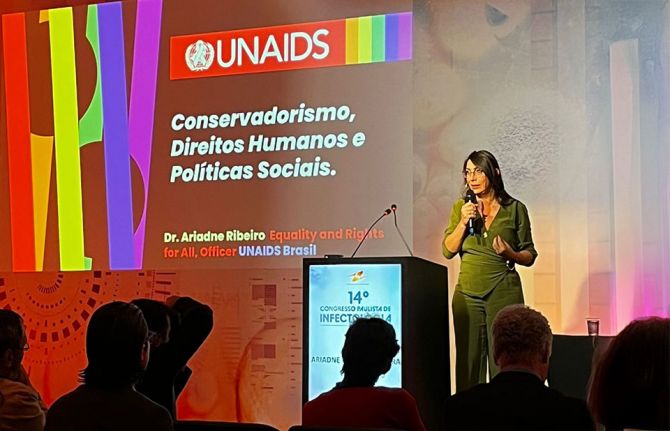 Upholding dignity for everyone: Ariadne Ribeiro Ferreira
Upholding dignity for everyone: Ariadne Ribeiro Ferreira

21 November 2024
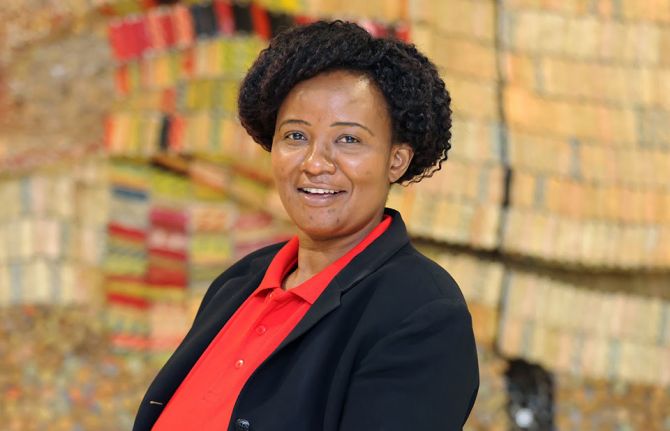 Evelyn Siula: A journey of strength and solidarity
Evelyn Siula: A journey of strength and solidarity
18 November 2024
Documents
Invest to end AIDS, fight inequalities, and save lives — UNAIDS appeal for 2024-2025
26 March 2024
As the UN's only cosponsored Joint Programme, UNAIDS has spearheaded a coordinated, multisectoral HIV response for nearly 30 years. The 2021 UN Political Declaration on HIV and AIDS, supported by UNAIDS' Global AIDS Strategy 2021-2026, charts a clear path to end AIDS as a public health threat by 2030. Taking this path is a sound political and financial choice that will save lives. We need a fully funded Joint Programme to drive the last mile, deliver SDG 3.3 and sustain progress.
Related
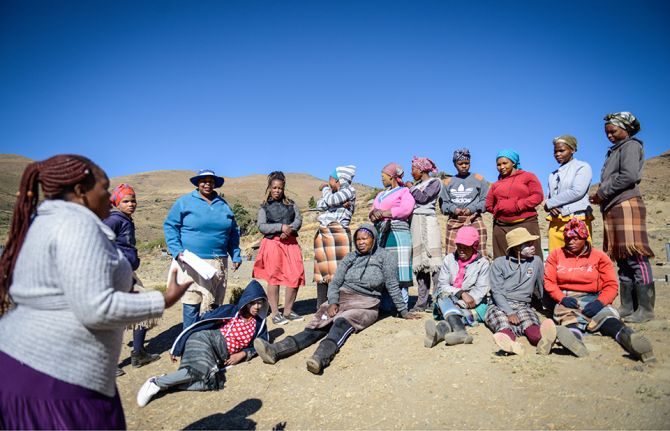 How the shift in US funding is threatening both the lives of people affected by HIV and the community groups supporting them
How the shift in US funding is threatening both the lives of people affected by HIV and the community groups supporting them

18 February 2025
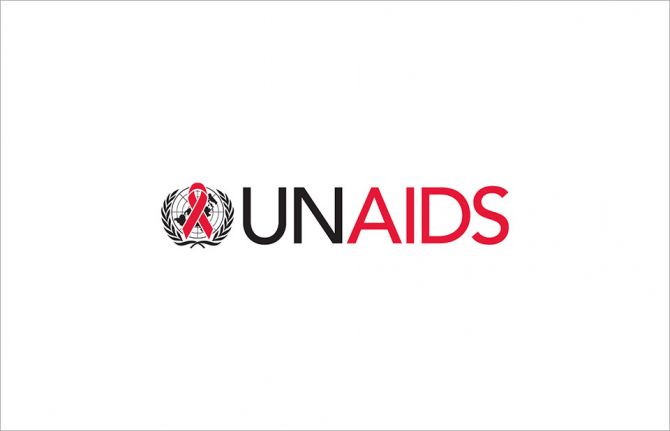 UNAIDS urges that all essential HIV services must continue while U.S. pauses its funding for foreign aid
UNAIDS urges that all essential HIV services must continue while U.S. pauses its funding for foreign aid

01 February 2025
Impact of community-led and community-based HIV service delivery beyond HIV: case studies from eastern and southern Africa
30 January 2025
Documents
Code of conduct to prevent abusive conduct and sexual misconduct at UNAIDS events and gatherings
26 February 2024
The Code of Conduct applies to any UNAIDS event or gathering, which shall include but is not limited to meetings, conferences and symposia, assemblies, receptions, scientific and technical events, expert meetings, workshops, exhibits, side events, and any other forum organized, hosted or sponsored in whole or part by UNAIDS. Such UNAIDS event or gathering, whether it is organized, hosted, or sponsored by UNAIDS, may take place in person or online, within/on or outside UNAIDS premises.
Related
Impact of community-led and community-based HIV service delivery beyond HIV: case studies from eastern and southern Africa
30 January 2025
A shot at ending AIDS — How new long-acting medicines could revolutionize the HIV response
21 January 2025
Indicators and questions for monitoring progress on the 2021 Political Declaration on HIV and AIDS — Global AIDS Monitoring 2025
17 December 2024
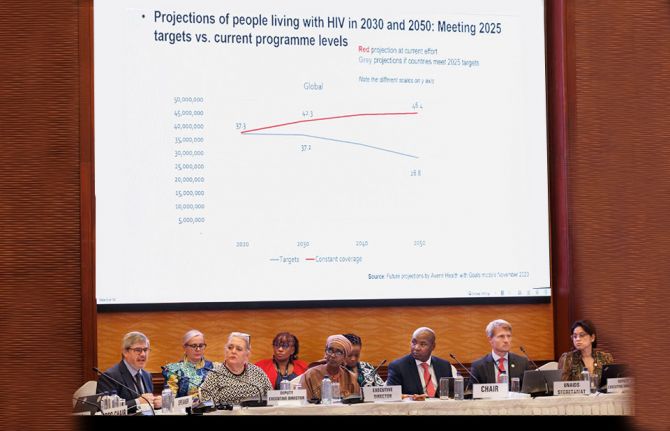 Global leaders commit to accelerating global efforts to end AIDS as a public health threat by 2030
Global leaders commit to accelerating global efforts to end AIDS as a public health threat by 2030

13 December 2024
UNAIDS data 2024
02 December 2024
Take the rights path to end AIDS — World AIDS Day report 2024
26 November 2024
 Upholding dignity for everyone: Ariadne Ribeiro Ferreira
Upholding dignity for everyone: Ariadne Ribeiro Ferreira

21 November 2024

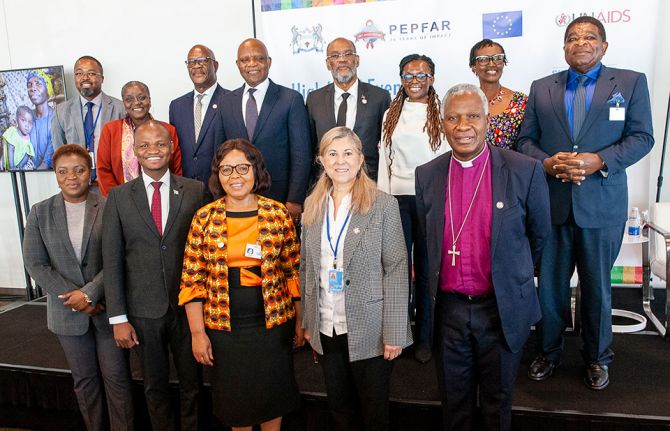
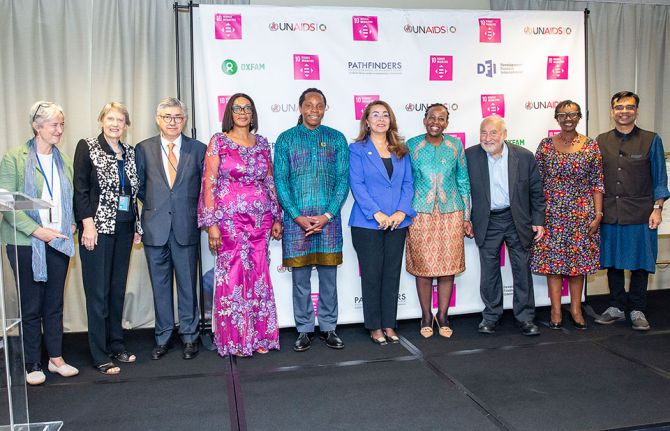
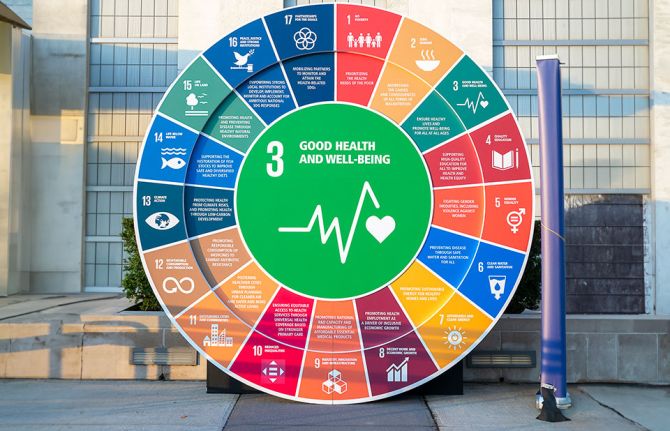
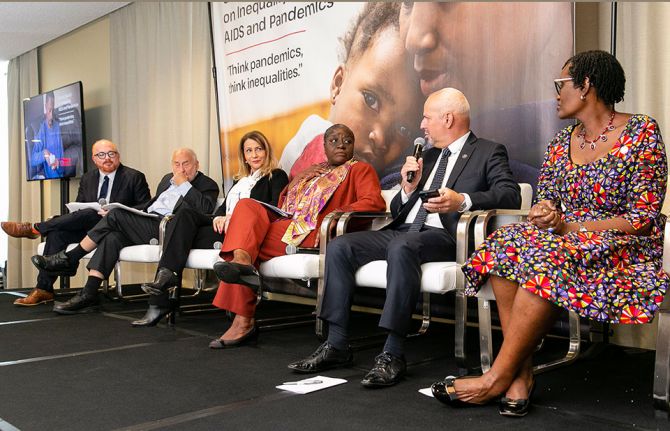
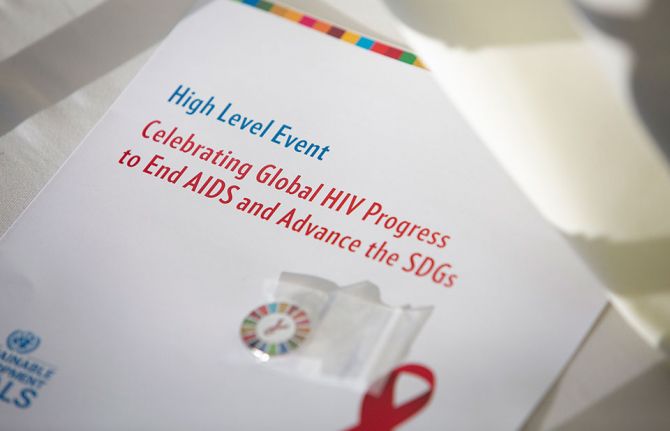
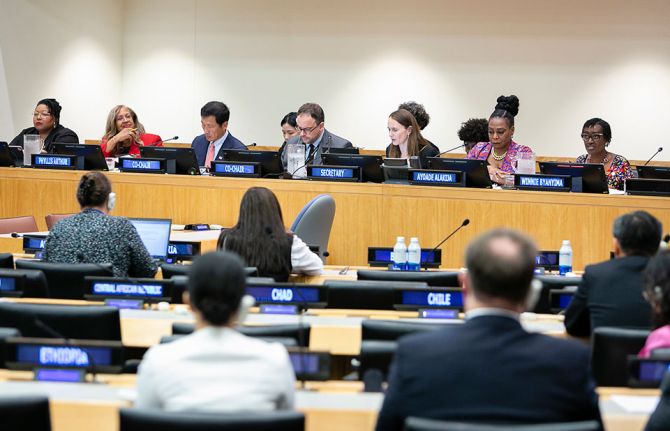


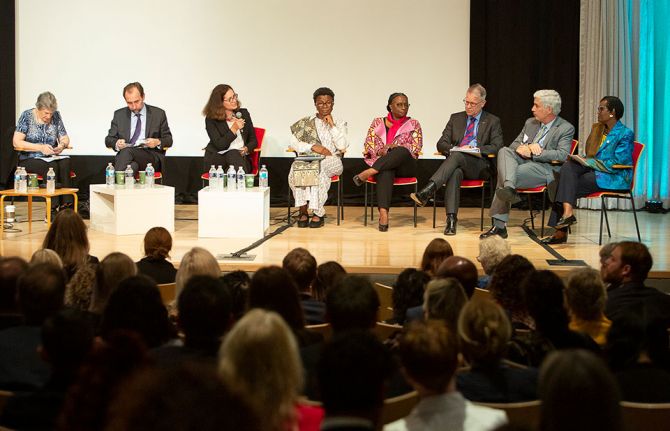
Press Release
UNAIDS’ key takeaways from the 78th United Nations General Assembly
29 September 2023 29 September 2023GENEVA, 29 September 2023—The topic of the global AIDS response—including its successes and invaluable lessons for handling pandemics—permeated many discussions during last week’s United Nations General Assembly (UNGA) in New York. From three High-Level meetings on health, to the Sustainable Development Goals (SDG) Summit to remarks given to the General Assembly and at High-Level Side events, the lessons from 40 years of responding to HIV—including the principle of leaving no one behind—were repeatedly referenced in the context of a future of health and equality for all.
In his remarks to the General Assembly, United States President Joe Biden referenced success against AIDS as a platinum example of what global solidarity and shared responsibility can achieve. “HIV/AIDS infections and deaths plummeted in no small part because of PEPFAR’s work in more than 55 countries, saving more than 25 million lives,” said President Biden. “It’s a profound testament to what we can achieve when we act together when we take on tough challenges and an admonition for us to urgently accelerate our progress so that no one is left behind.”
At the opening of the SDG Summit, Irish prime minister, Leo Eric Varadkar noted that half-way to the 2030 targets we are not where we would wish to be with only 15% of the SDGs on target. He added that despite this there is progress. “More than 800 million people have been connected to electricity since 2015, 146 countries have met or are on track to achieving the under-five mortality target, and effective HIV treatment has halved global AIDS-related deaths since 2010,” said Mr Varadkar. “This progress shows that change is possible, that backsliding is not inevitable, and that poverty, pollution and gender inequality are not pre-ordained. They are trends that can be reversed, problems that can be solved and tragedies that can be averted.”
While celebrating the collective success against AIDS, UNAIDS urged leaders to keep HIV high on political agendas for three reasons. “Firstly,” said Winnie Byanyima, Executive Director of UNAIDS, “The job is not yet done—43 years into the pandemic, there are still more than 9 million people waiting for life-saving treatment, more than 1.3 million new HIV infections every year and AIDS took a life every minute in 2022. Secondly: We know how to end AIDS and, we have the path and the power to do it. And thirdly: The AIDS response is a smart investment yielding other health, social and economic impacts.”
A number of ministers and heads of state spoke about the economic challenges they face as the result of multiple and concurrent crises, and the need for cooperation and solidarity to overcome these crises while continuing to make critical investments in development and health. Many political leaders noted that while the political will is there, there are not enough domestic resources to invest in health, education and social protection.
The UN Secretary-General Antonio Guterres reminded the international community that there is an urgent need to rethink—and reconfigure--the international financial architecture in order to achieve the SDGs. The same is true for UNAIDS's mission to end AIDS as a public health threat and ensure those gains are sustained well beyond 2030. Ending AIDS requires new and sustained resources, and a different political discourse on funding for development. UNAIDS highlighted the importance for maintaining bilateral funding for PEPFAR and multilateral funding for the Global Fund to Fight AIDS, TB and Malaria.
UNAIDS stressed that as we develop a global architecture for pandemics prevention, preparedness and response, we need to draw from over 40 years of responding to AIDS, because the AIDS response is pandemic prevention, preparedness and response.
The importance of community-led responses as essential to reaching marginalized groups and people most affected by pandemics was emphasized. UNAIDS highlighted that the Pandemic Accord must acknowledge the central role of community-led responses and commit member states to include communities and civil society in decision-making, planning, preparation, implementation and monitoring.
The call to end inequalities was a central theme to UNAIDS’ messaging at UNGA. UNAIDS highlighted the need for equitable, affordable access to life saving medical products and how inequality drives, and prolongs, pandemics. UNAIDS advocated metrics, targets and accountability systems for focusing the response and additionally for advancing human rights to improve public health and warned that human rights violations undermine trust and drive people away from health services.
Finally, UNAIDS called for a multisectoral/whole of society approach to effectively prevent, prepare for and respond to pandemics because pandemics are not merely health crises—they also present political, social and economic challenges which require transformative action by all.
The Executive Director of UNODC, Ms Ghada Waly, on behalf of UNAIDS’ cosponsoring organizations acknowledged that, “The multi-sectoral partnership on HIV/AIDS is as important as ever, bringing together the expertise, assets and comparative advantages of 11 Cosponsors in an exemplary partnership for the development approach of the SDGs.”
UNAIDS
The Joint United Nations Programme on HIV/AIDS (UNAIDS) leads and inspires the world to achieve its shared vision of zero new HIV infections, zero discrimination and zero AIDS-related deaths. UNAIDS unites the efforts of 11 UN organizations—UNHCR, UNICEF, WFP, UNDP, UNFPA, UNODC, UN Women, ILO, UNESCO, WHO and the World Bank—and works closely with global and national partners towards ending the AIDS epidemic by 2030 as part of the Sustainable Development Goals. Learn more at unaids.org and connect with us on Facebook, Twitter, Instagram and YouTube.

Press Statement
Board members warned that the severe shortfall in UNAIDS operating budget risks prolonging the AIDS pandemic
03 November 2022 03 November 2022UNAIDS Executive Director calls for immediate investment of $35 million in end-of-year funding and a commitment to increase the operating budget to $210 million for 2023
GENEVA, 3 November 2022—Board members of the United Nations Joint Programme on HIV/AIDS (UNAIDS) have met to discuss how to address a $35 million funding gap in the organization’s minimum operating budget of $187 million which is undermining efforts to end the AIDS pandemic as a global health threat by 2030. The budget required to fully meet the organization’s operational needs is set at $210 million.
In his opening remarks at a special meeting held in Geneva to discuss solutions to the funding gap, the Ambassador of Thailand’s Permanent Mission to the United Nations Office in Geneva, Rongvudhi Virabutr, the current chair of UNAIDS Programme Coordinating Board, said that the Joint Programme continued to have an important role in data collection and analysis to develop evidence and mobilize political leadership.
“As the largest funder of AIDS responses said earlier this year, the Joint Programme is “the North Star", without which we are all blind. A fully funded and effectively functioning Joint Programme is key to our collective success. We have no time to waste.”
Calling for an immediate release of $35 million in end-of-year funding, UNAIDS Executive Director, Winnie Byanyima said that the organization’s financial position had deteriorated even further since the last meeting of the UNAIDS PCB in June. She said that the war in Ukraine and movements in currency exchange markets had aggravated the situation.
“The size of the budget shortfall means that it cannot be addressed by stretching the budget or finding any more efficiency gains. It is forcing stark choices—a dramatic reduction in UNAIDS country presence or further reductions to our co-sponsors are some of the scenarios,” said Ms Byanyima. “These choices are devastating, and all scenarios will set the global AIDS response back even further by denying HIV prevention, treatment and care services to millions of vulnerable people.”
UNAIDS has taken significant action to resolve the funding gap by instituting budget discipline, developing a new resource mobilization strategy and working closely with a specially appointed task team made up of members of the PCB to come up with actions and recommendations to strengthen the financial position in 2023.
UNAIDS co-sponsors, communities of people living with and affected by HIV and civil society organizations have all called for UNAIDS to be fully funded so it can achieve is vital mission.
“The world is in danger and now our collective efforts in addressing the Sustainable Development Goal of eliminating HIV/AIDS as a public health threat is at stake,” said Christian Hui of the Prevention Access Campaign, Canada. “We cannot deny the contribution of the Joint Programme. Civil society, especially marginalised and key populations, have hugely benefited from the Joint Programme to advance access to lifesaving antiretrovirals and to combination prevention, to advance human rights and to empower communities to take an active part in HIV programming.”
Recognizing the complementarity of UNAIDS work, other partners in the HIV response, including the Global Fund to Fight AIDS, Tuberculosis and Malaria and the United States President’s Emergency Plan for AIDS Relief (PEPFAR) have also added their voices for UNAIDS to be fully funded.
UNAIDS is present in 70 countries worldwide working in partnership with governments, civil society and communities, collecting the data that shapes the HIV response, advocating for the reversal of harmful laws and policies to create an enabling legal environment, working for an end to HIV-related stigma and discrimination, and challenging the inequalities driving the HIV pandemic among vulnerable and marginalized groups of people. In 2020-2021, UNAIDS supported more than 80% of applications to the Global Fund, guiding $5 billion in HIV funding.
“We would like to call upon all stakeholders for increased support, coordination and collaboration with UNAIDS to address the unfinished agenda of saving lives and leaving no one behind in our efforts to end AIDS,” said Alegnta Gebreyesus Guntie of the Permanent Mission of Ethiopia to the United Nations Office in Geneva.
“UNAIDS support to countries is on developing data-informed, science-based strategies tailored to the epidemic and developing plans to implement them well,” said Ms. Byanyima. “Now, the work of the Joint Programme is needed more than ever to help countries to be ready for the next round of Global Fund applications in a difficult allocation environment.”
The UNAIDS Global AIDS Update In Danger reveals an HIV response faltering in the wake of the COVID-19 pandemic, the global economic crisis, and the war in Ukraine. A total of 650 000 people died of AIDS-related illnesses in 2021 and there were 1.5 million new HIV infections—1 million above the 2020 target of 500 000. New HIV infections increased in 38 countries.
“UNAIDS is working tirelessly to reverse the trend and to get the HIV response back on track.” said Ms. Byanyima.
UNAIDS
The Joint United Nations Programme on HIV/AIDS (UNAIDS) leads and inspires the world to achieve its shared vision of zero new HIV infections, zero discrimination and zero AIDS-related deaths. UNAIDS unites the efforts of 11 UN organizations—UNHCR, UNICEF, WFP, UNDP, UNFPA, UNODC, UN Women, ILO, UNESCO, WHO and the World Bank—and works closely with global and national partners towards ending the AIDS epidemic by 2030 as part of the Sustainable Development Goals. Learn more at unaids.org and connect with us on Facebook, Twitter, Instagram and YouTube.
Documents
Global AIDS Strategy 2021-2026 — End Inequalities. End AIDS.
25 March 2021
The Global AIDS Strategy 2021–2026 is a bold new approach to use an inequalities lens to close the gaps that are preventing progress towards ending AIDS. The Global AIDS Strategy aims to reduce these inequalities that drive the AIDS epidemic and prioritize people who are not yet accessing life-saving HIV services. The Strategy sets out evidence-based priority actions and bold targets to get every country and every community on-track to end AIDS as a public health threat by 2030. Download Executive summary | Full document This document is also available in Indonesian
Related
Impact of community-led and community-based HIV service delivery beyond HIV: case studies from eastern and southern Africa
30 January 2025
A shot at ending AIDS — How new long-acting medicines could revolutionize the HIV response
21 January 2025
Indicators and questions for monitoring progress on the 2021 Political Declaration on HIV and AIDS — Global AIDS Monitoring 2025
17 December 2024
 Global leaders commit to accelerating global efforts to end AIDS as a public health threat by 2030
Global leaders commit to accelerating global efforts to end AIDS as a public health threat by 2030

13 December 2024
UNAIDS data 2024
02 December 2024
Take the rights path to end AIDS — World AIDS Day report 2024
26 November 2024
 Upholding dignity for everyone: Ariadne Ribeiro Ferreira
Upholding dignity for everyone: Ariadne Ribeiro Ferreira

21 November 2024

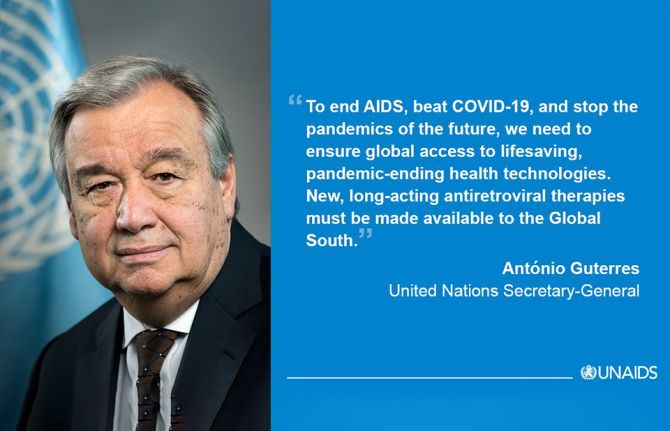
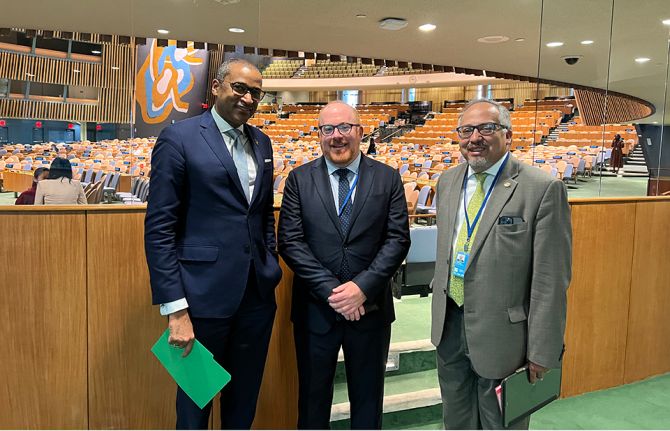
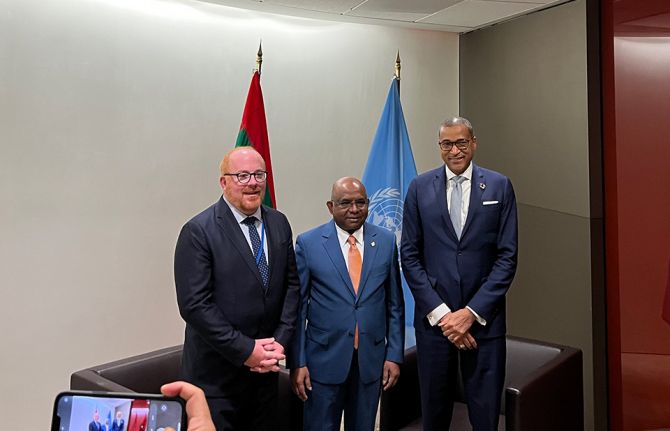
Feature Story
One year into the bold new strategy on HIV/AIDS, it is vital to speed up progress, say UN Member States
10 June 2022
10 June 2022 10 June 2022One year after adopting a new Political Declaration on HIV and AIDS: Ending Inequalities and Getting on Track to End AIDS by 2030, United Nation’s Member States have highlighted the need to work together to speed up progress on implementation.
In advance of the meeting, the UN Secretary General released a report entitled Tackling inequalities to end the AIDS pandemic on the implementation of the political declaration on HIV/AIDS. The report sets out how inequalities and insufficient investment “leave the world dangerously underprepared to confront the pandemics of today and tomorrow”
The AIDS pandemic is responsible for more than 13,000 deaths every week.
The Joint United Nations Programme on HIV/AIDS (UNAIDS) data show that HIV infections and AIDS-related deaths are not currently declining fast enough to end the pandemic by 2030 as pledged.
The Secretary General’s report highlights solutions including (a) HIV prevention and societal enablers; (b) community-led responses; (c) equitable access to medicines, vaccines and health technologies; (d) sustainable financing for the AIDS response and wider pandemic prevention, preparedness and response; (e) people-centered data systems and (f) strengthening global partnerships.
The UN Secretary General’s statement to the General Assembly, delivered by Chef de Cabinet Courtenay Rattray, outlined three immediate steps to reverse current trends and get back on track. “First, we need to tackle intersecting inequalities, discrimination and the marginalization of entire communities, which are often exacerbated by punitive laws, policies and practices”. He called for policy reforms to reduce the HIV risks of marginalised communities including sex workers, people who inject drugs, prisoners, transgender people and gay men. He noted how stigma is obstructing public health: “Stigmatization hurts everyone. Social solidarity protects everyone”.
The second step is ensuring the sharing of health technologies, including long-acting antiretrovirals, to make them available to people in all countries of the world.
The third step is to increase the resources made available to tackle AIDS. “Investments in AIDS are investments in global health security. They save lives – and money.”
In his opening remarks, the President of the General Assembly, Mr. Abdulla Shahid, noted that “equal access to healthcare is an essential human right to guarantee public health, for all. No one is safe until we are all safe. Striving to achieve the 2025 AIDS targets is an opportunity to work together to increase investments towards public health systems and pandemic responses, and to draw on the hard-learnt lessons from the HIV/AIDS crisis for our recovery from COVID-19, and vice versa.”
Over 35 Member States and Observers made statements during the AIDS review, which included contributions on behalf of the Africa Group, the Caribbean Community and the Central American Integration System and the European Union.
Statements emphasised the urgency of stepping up collective action to get on track to meet the 2025 targets, and the importance of an inequalities lens to ensure a successful HIV response.
The President of the General Assembly, the Secretary General, the Africa group, the EU and several Member States stressed the importance of fully financing the HIV response and strengthening investment in Global Health.
The Africa Group, along with many others, spoke about addressing stigma and discriminatory laws which keep people from accessing health care and social services.
The debate made clear that the end of AIDS is possible, but only if countries worked together and were courageous in addressing inequalities. “The most important message today,” noted the Secretary General’s conclusion, “is that if we work together to tackle the inequalities that perpetuate HIV/AIDS, we can still end it as a public health threat by 2030.”
All said in under one minute. This is huge and unequivocal.
— Ben Phillips (@benphillips76) June 10, 2022
The Chef de Cabinet delivers to the UN General Assembly the urgent insistence from the UN Secretary-General that the technologies for new long-acting HIV medicines must be shared globally now. There is no time to lose. pic.twitter.com/t1DWlPsdB3
Related
Documents
Ending inequalities and getting on track to end AIDS by 2030 — A summary of the commitments and targets within the United Nations General Assembly’s 2021 Political Declaration on HIV and AIDS
23 February 2022
The United Nations General Assembly’s 2021 Political Declaration on AIDS features bold global commitments and targets for 2025 that are ambitious but achievable if countries and communities follow the evidence-informed guidance within the Global AIDS Strategy 2021–2026. This UNAIDS publication provides a summary of those commitments and targets to get every country and every community on-track to end AIDS as a public health threat by 2030.
Related
Impact of community-led and community-based HIV service delivery beyond HIV: case studies from eastern and southern Africa
30 January 2025
A shot at ending AIDS — How new long-acting medicines could revolutionize the HIV response
21 January 2025
Indicators and questions for monitoring progress on the 2021 Political Declaration on HIV and AIDS — Global AIDS Monitoring 2025
17 December 2024
 Global leaders commit to accelerating global efforts to end AIDS as a public health threat by 2030
Global leaders commit to accelerating global efforts to end AIDS as a public health threat by 2030

13 December 2024
UNAIDS data 2024
02 December 2024
Take the rights path to end AIDS — World AIDS Day report 2024
26 November 2024

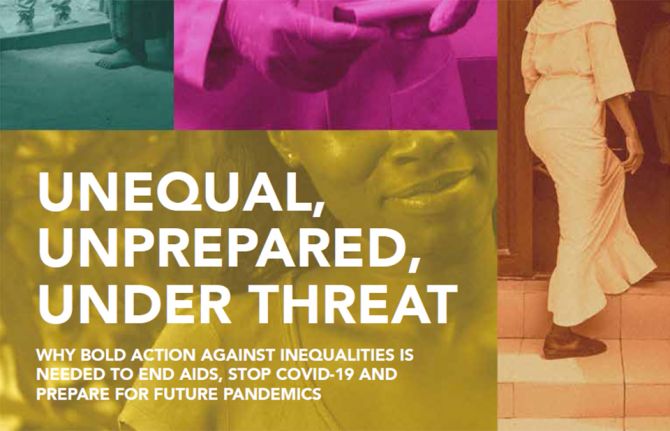
Press Release
UNAIDS warns of millions of AIDS-related deaths and continued devastation from pandemics if leaders don’t address inequalities
29 November 2021 29 November 2021GENEVA, 29 November 2021—UNAIDS issued a stark warning today that if leaders fail to tackle inequalities the world could face 7.7 million* AIDS-related deaths over the next 10 years. UNAIDS further warns that if the transformative measures needed to end AIDS are not taken, the world will also stay trapped in the COVID-19 crisis and remain dangerously unprepared for the pandemics to come.
“This is an urgent call to action,” said UNAIDS Executive Director Winnie Byanyima. “Progress against the AIDS pandemic, which was already off track, is now under even greater strain as the COVID-19 crisis continues to rage, disrupting HIV prevention and treatment services, schooling, violence-prevention programmes and more. We cannot be forced to choose between ending the AIDS pandemic today and preparing for the pandemics of tomorrow. The only successful approach will achieve both. As of now, we are not on track to achieve either.”
The warning comes in a new report by UNAIDS launched ahead of World AIDS Day (1 December) entitled Unequal, unprepared, under threat: why bold action against inequalities is needed to end AIDS, stop COVID-19 and prepare for future pandemics.
Some countries, including some with the highest rates of HIV, have made remarkable progress against AIDS, illustrating what is feasible. However, new HIV infections are not falling fast enough globally to stop the pandemic, with 1.5 million new HIV infections in 2020 and growing HIV infection rates in some countries. Infections are also following lines of inequality. Six in seven new HIV infections among adolescents in sub-Saharan Africa are occurring among adolescent girls. Gay men and other men who have sex with men, sex workers and people who use drugs face a 25–35 times greater risk of acquiring HIV worldwide.
COVID-19 is undercutting the AIDS response in many places. The pace of HIV testing declined almost uniformly and fewer people living with HIV initiated treatment in 2020 in 40 of 50 countries reporting to UNAIDS. HIV prevention services have been impacted—in 2020, harm reduction services for people who use drugs were disrupted in 65% of 130 countries surveyed.
“It is still possible to end the epidemic by 2030,” affirmed United Nations Secretary-General António Guterres in his World AIDS Day message. “But that will require stepped up action and greater solidarity. To beat AIDS—and build resilience against the pandemics of tomorrow—we need collective action.”
This new report from UNAIDS examines five critical elements of the plan agreed by Member States at the United Nations General Assembly High-Level Meeting on AIDS that must be urgently implemented to halt the AIDS pandemic and which are critical but under-funded and under-prioritized for pandemic prevention, preparedness and response. These include:
- Community-led and community-based infrastructure.
- Equitable access to medicines, vaccines and health technologies.
- Supporting workers on the pandemic front lines.
- Human rights at the centre of pandemic responses.
- People-centred data systems that highlight inequalities.
The call for upscaled investments and shifts in laws and policies to end the inequalities that drive AIDS and other pandemics is backed by leaders in global health and pandemic response from across the world.
“If we do not take the steps needed to tackle the inequalities driving HIV today, not only will we fail to end the AIDS pandemic, we will also leave our world dangerously unprepared for future pandemics,” said Helen Clark, Co-Chair of the Independent Panel for Pandemic Preparedness and Response, in a special foreword to the UNAIDS report. “Pandemics find space to grow in the fractures of divided societies. The amazing scientists, doctors, nurses and communities who work to end pandemics cannot succeed unless world leaders take the steps that will enable them to do so.”
UNAIDS and global health experts emphasize that while business as usual would kill millions and leave the world trapped with colliding pandemics going on for decades, leaders can, by acting boldly and together to tackle the inequalities in which pandemics thrive, end AIDS, overcome the COVID-19 crisis and be protected from the pandemic threats of the future.
“Pathogens ranging from HIV to the virus behind COVID-19 invade the cracks and fissures in our society with startling opportunism,” said Paul Farmer of Partners in Health, a nonprofit that for decades has effectively treated AIDS in settings of material poverty. “That the AIDS pandemic is shaped by deep structural inequalities need not resign us to inaction, however. Our teams, in rural Haiti and across the world, have routinely shown that with comprehensive care delivery, robust forms of accompaniment and social support and a larger dose of social justice, disparities in HIV outcomes can be rapidly narrowed, and health systems swiftly strengthened. We shouldn’t settle for anything less.”
This year marks 40 years since the first cases of AIDS were reported. Since that time, where investments have met ambition, there has been huge progress, particularly in expanding access to treatment. By June 2021, 28.2 million people had access to HIV treatment, up from 7.8 million in 2010, although progress has slowed considerably.
Countries with laws and policies aligned to evidence, strong community engagement and participation and robust and inclusive health systems have had the best outcomes, whereas the regions with the largest resource gaps and countries with punitive laws and that have not taken a rights-based approach to health have fared the worst.
“We know what works from seeing brilliant AIDS responses in some places,” said Ms Byanyima, “but we need to apply that everywhere for everyone. We have an effective strategy that leaders adopted this year, but it needs to be implemented in full. Ending inequalities to end AIDS is a political choice that requires bold policy reforms and requires money. We have reached a fork in the road. The choice for leaders to make is between bold action and half-measures.”
* The estimate of 7.7 million AIDS-related deaths between 2021 and 2030 is what UNAIDS models predict if HIV service coverage is held constant at 2019 levels. If the Global AIDS Strategy 2021–2026: End Inequalities, End AIDS is executed and the 2025 targets are achieved, UNAIDS estimates that at least 4.6 million of those deaths can be averted over the decade.
UNAIDS
The Joint United Nations Programme on HIV/AIDS (UNAIDS) leads and inspires the world to achieve its shared vision of zero new HIV infections, zero discrimination and zero AIDS-related deaths. UNAIDS unites the efforts of 11 UN organizations—UNHCR, UNICEF, WFP, UNDP, UNFPA, UNODC, UN Women, ILO, UNESCO, WHO and the World Bank—and works closely with global and national partners towards ending the AIDS epidemic by 2030 as part of the Sustainable Development Goals. Learn more at unaids.org and connect with us on Facebook, Twitter, Instagram and YouTube.
Documents
Executive summary — Global AIDS Strategy 2021-2026 — End Inequalities. End AIDS.
25 March 2021
The Global AIDS Strategy 2021–2026 is a bold new approach to use an inequalities lens to close the gaps that are preventing progress towards ending AIDS. The Global AIDS Strategy aims to reduce these inequalities that drive the AIDS epidemic and prioritize people who are not yet accessing life-saving HIV services. The Strategy sets out evidence-based priority actions and bold targets to get every country and every community on-track to end AIDS as a public health threat by 2030.
Related
Impact of community-led and community-based HIV service delivery beyond HIV: case studies from eastern and southern Africa
30 January 2025
A shot at ending AIDS — How new long-acting medicines could revolutionize the HIV response
21 January 2025
Indicators and questions for monitoring progress on the 2021 Political Declaration on HIV and AIDS — Global AIDS Monitoring 2025
17 December 2024
 Global leaders commit to accelerating global efforts to end AIDS as a public health threat by 2030
Global leaders commit to accelerating global efforts to end AIDS as a public health threat by 2030

13 December 2024
UNAIDS data 2024
02 December 2024
Take the rights path to end AIDS — World AIDS Day report 2024
26 November 2024

